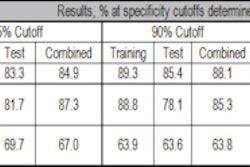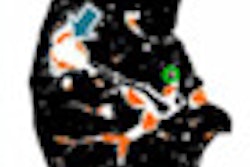The U.S. Food and Drug Administration (FDA) today released the results of its investigation into a series of radiation overdose incidents in CT brain perfusion exams. The agency said that, most likely, the incidents were not due to scanner malfunction, but rather were caused by "improper use" of the systems.
In October 2009, reports of a series of CT radiation overdoses at Cedars-Sinai Medical Center in Los Angeles prompted the FDA to begin looking into the issue of medical radiation. In addition to Cedars-Sinai, a number of other hospitals in the U.S. reported that patients had received radiation overdoses. In many cases, imaging facilities were unaware of the incidents until after patients had been sent home and began experiencing side effects from radiation.
The agency held a series of hearings in March 2010 to discuss ways to make CT brain perfusion scans safer, in particular by requiring scanner manufacturers to incorporate design changes into their products that enable radiology professionals to see how much dose has been delivered during a procedure.
In today's announcement, the FDA said that its investigation indicated that scanner malfunction was probably not the cause of radiation overdoses in the CT brain perfusion cases. "Instead, it is likely that the improper use of the scanners resulted in these overdoses," the FDA statement said.
The FDA investigation also revealed that at least 385 patients received excessive radiation from CT brain perfusion scans at five hospitals in California and one in Alabama. The scans were performed to confirm the presence of stroke.
The agency said it has sent a letter to the main imaging industry group, Medical Imaging and Technology Alliance (MITA), detailing the results of its investigation into the CT brain perfusion incidents, and discussing possible equipment modifications. The changes include:
- Console notifications that alert operators in the event that a patient receives a high radiation dose
- The provision of information and training on brain perfusion protocols to all facilities that receive base CT equipment, whether or not the facilities purchase additional software that enables the quantitative analysis of cerebral hemodynamics
- Clarification of imaging parameters that affect dose, along with instructions on how to appropriately set those parameters
- Organization of all dose-related information into one section of each CT scanner user manual, in a dedicated dose manual, or "indexed comprehensively in a concordance covering all manuals"
Representatives of MITA said that the agency's recommendations correspond to the group's own initiatives.
"The recommendations in the FDA's letter are issues we have been working on with the agency over the last year and include an important component of MITA's CT Dose Check Initiative," said David Fisher, executive director of MITA. "While reported incidents have not been attributed to CT scanner malfunction, as part of our longstanding commitment to educating users and to developing technologies that reduce radiation levels, MITA looks forward to continuing our work with the FDA. In the end, the optimal solution will require action by all stakeholders including manufacturers, users, and regulators."
By Brian Casey
AuntMinnie.com staff writer
November 9, 2010
Related Reading
SoCal hospitals say patients got too much CT radiation, August 6, 2010
FDA hearings rise above medical radiation rhetoric, March 31, 2010
Lawsuit hits GE in Alabama CT overdose case, December 18, 2009
FDA finds new cases of CT radiation overexposure, December 7, 2009
Cedars-Sinai raises tally of radiation overdose cases, November 13, 2009
Copyright © 2010 AuntMinnie.com



















